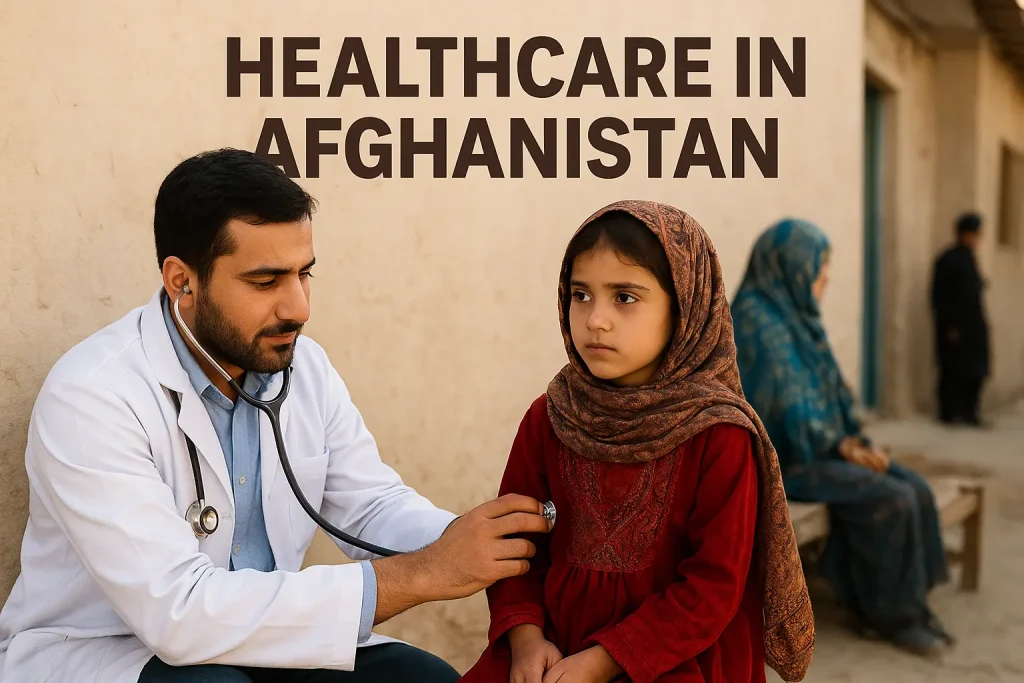
The State of Healthcare in Afghanistan: Challenges, Progress, and the Road Ahead
Healthcare is one of the most pressing issues in Afghanistan, shaping the lives of millions across cities, towns, and rural communities. For decades, the country has struggled with war, political instability, poverty, and a fragile infrastructure that has hindered the development of a sustainable health system. Yet, despite these challenges, progress has been made, and the Afghan people continue to show resilience in their pursuit of better health and wellbeing.
This blog takes a closer look at Afghanistan’s healthcare system—its history, current state, challenges, and the opportunities that could pave the way for a healthier future.
A Historical Overview of Healthcare in Afghanistan
Afghanistan’s healthcare system has historically been underdeveloped. Before 2001, fewer than 10% of the population had access to basic health services. Hospitals were scarce, medical supplies were limited, and many qualified doctors had left the country due to conflict. Rural areas, where the majority of Afghans live, were almost entirely cut off from healthcare services.
After 2001, international aid and development programs brought major changes. Donor-funded projects, such as the Basic Package of Health Services (BPHS) and the Essential Package of Hospital Services (EPHS), were introduced to expand primary care and hospital access. These programs laid the foundation for Afghanistan’s public health network, increasing the availability of clinics, training healthcare workers, and improving vaccination rates.
The Current State of Afghanistan’s Healthcare
Today, Afghanistan’s health system remains fragile but more developed than in the past. Hospitals and clinics can be found in most provinces, and there is a growing network of private hospitals in major cities like Kabul, Herat, Mazar-e-Sharif, and Kandahar.
Key Health Statistics
Life expectancy: Around 64 years, lower than the global average but higher than it was two decades ago.
Infant mortality rate: Among the highest in the world, though it has declined significantly since 2001.
Maternal health: Maternal mortality has improved, but access to skilled birth attendants remains uneven.
Vaccination: Programs supported by international organizations have expanded, reducing cases of preventable diseases like polio.
Challenges Facing the Afghan Healthcare System
Despite progress, Afghanistan continues to face enormous challenges in delivering healthcare.
1. Limited Access in Rural Areas
About 70% of Afghans live in rural or mountainous regions, where clinics are scarce and difficult to reach. Villagers often travel for hours—or even days—to reach a hospital.
2. Shortage of Medical Professionals
Afghanistan faces a critical shortage of doctors, nurses, and midwives. Many health professionals leave the country for better opportunities abroad. In rural areas, community health workers are often the only point of contact.
3. Economic Barriers
Poverty is widespread, and many families cannot afford private healthcare. Public facilities exist, but they are often underfunded, lack equipment, or experience drug shortages.
4. Women’s Healthcare
Access to healthcare for women is especially challenging. Cultural barriers, lack of female doctors, and mobility restrictions mean many Afghan women go without essential medical care. Maternal health is one of the biggest concerns, with thousands of preventable deaths occurring each year.
5. Impact of Conflict and Instability
Years of conflict have damaged hospitals, delayed medical supply chains, and made it dangerous for healthcare workers to serve in certain regions.
6. Dependence on International Aid
A large portion of Afghanistan’s healthcare funding comes from international donors. Without long-term sustainability, the system remains vulnerable to political shifts and reduced funding.
The Role of Private Healthcare in Afghanistan
In recent years, private hospitals and clinics have become increasingly important. Cities like Kabul have seen the rise of modern facilities offering specialized care, diagnostics, and surgeries. Private healthcare often provides higher-quality services, but it comes at a cost that many Afghans cannot afford.
Private hospitals also create opportunities for innovation, medical education, and better employment for Afghan doctors who might otherwise leave the country. However, regulation and affordability remain issues that must be addressed.
Public Health Issues in Afghanistan
In addition to structural challenges, Afghanistan struggles with several urgent public health concerns:
Malnutrition: Nearly half of Afghan children suffer from stunting due to chronic malnutrition.
Infectious Diseases: Tuberculosis, polio, and measles remain major threats, especially in remote areas.
Mental Health: Years of conflict, displacement, and trauma have created a silent crisis in mental health, yet resources and awareness remain minimal.
Chronic Diseases: As lifestyles change, conditions like diabetes and cardiovascular diseases are on the rise, but the health system is not fully prepared to manage them.
Signs of Hope and Progress
Despite the difficulties, there are reasons to remain hopeful about healthcare in Afghanistan:
Community Health Workers (CHWs): Thousands of trained CHWs provide essential services in rural areas, bridging the gap where hospitals are absent.
Improvements in Maternal Care: Skilled midwife training programs have saved countless lives.
Technological Advancements: Telemedicine and digital health platforms are slowly emerging, helping connect patients with doctors in urban centers.
Education and Training: Afghan universities are producing more doctors, nurses, and pharmacists, strengthening local capacity.
Resilient Communities: Afghan families continue to prioritize health and education, investing in better futures for their children despite hardship.
The Road Ahead: Building a Sustainable Healthcare System
For Afghanistan to build a stronger and sustainable healthcare system, several steps are essential:
Strengthening Primary Healthcare: Expanding clinics and ensuring medicine supplies in rural areas.
Investing in Human Capital: Training and retaining Afghan doctors, nurses, and midwives.
Empowering Women’s Healthcare: Increasing female healthcare workers and ensuring safe access for women.
Diversifying Funding Sources: Reducing dependency on international aid and building local, community-driven health initiatives.
Improving Mental Health Services: Integrating counseling, trauma care, and awareness campaigns into the public health agenda.
Leveraging Technology: Using mobile health, telemedicine, and digital tools to connect patients with medical advice and reduce access barriers.

